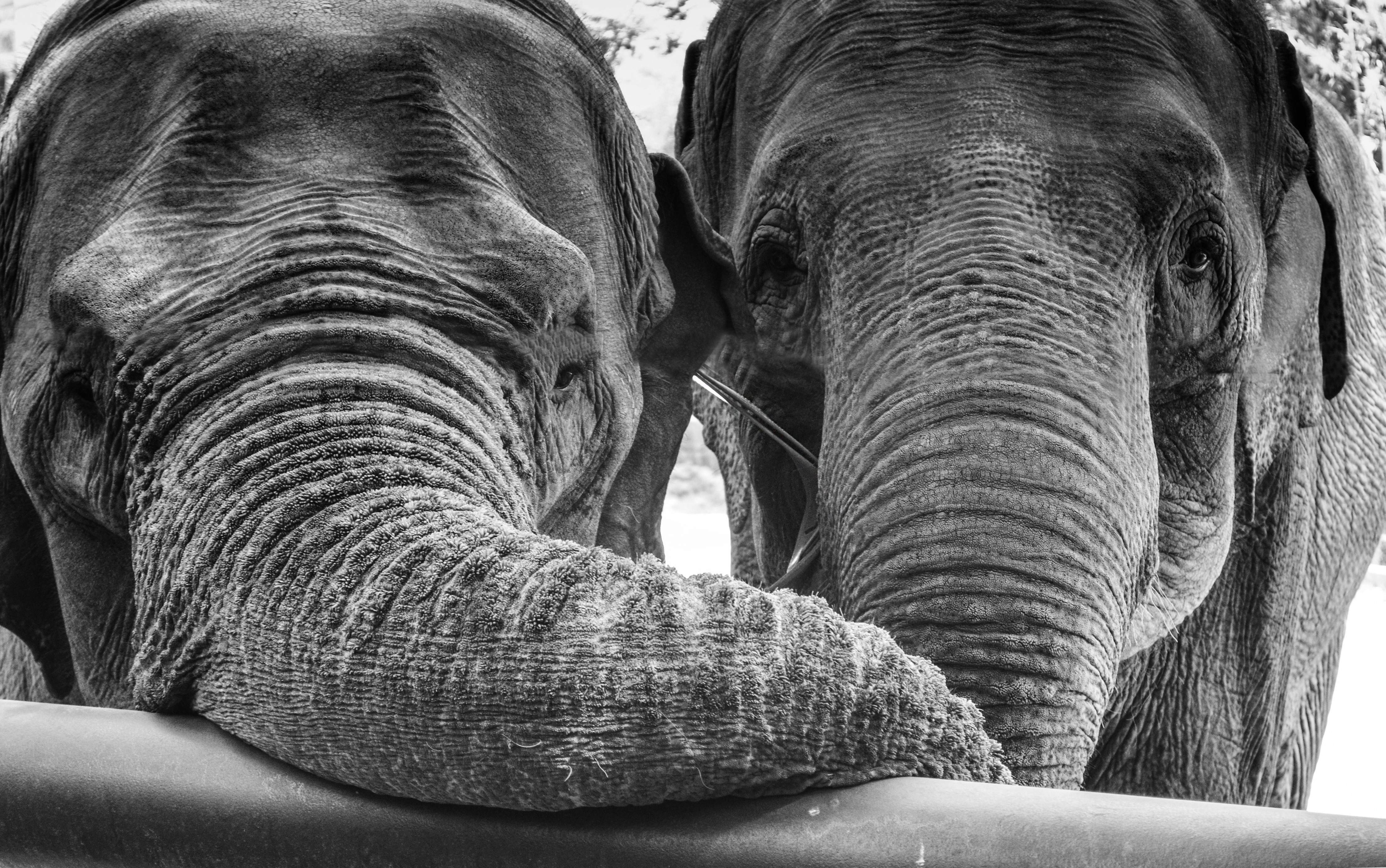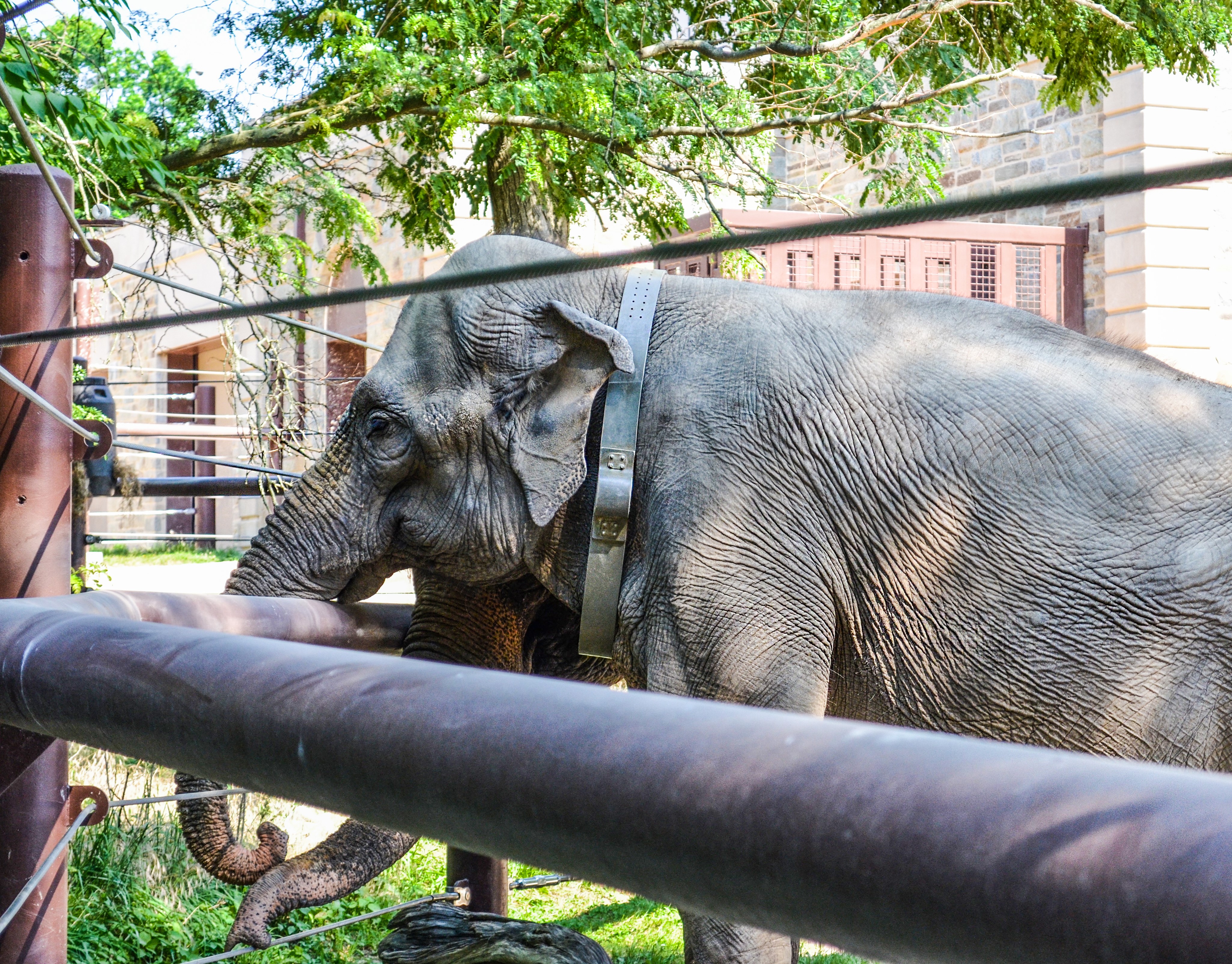Picking up good vibrations for elephant conservation

As a recent graduate from Cornell, I’ve left with my pockets brimming with memories of extraordinary moments. My favorite moments come from my undergraduate research work with BRP, and specifically, The Elephant Listening Project.
The Elephant Listening Project (ELP) uses sound recorders to monitor and learn more about the behavior of forest elephants in Central Africa. African forest elephants, Loxodonta cyclotis — unlike their much better known cousins, the African savanna elephant, Loxodonta africana — are highly elusive, so observing them directly in their dense rainforest habitat is extremely difficult. African forest elephant survival is in severe jeopardy, due to ivory poaching and habitat destruction. Eavesdropping on their vocalizations using acoustic monitoring is an ingenious method to generate knowledge about their behavior that will enable us to develop effective conservation strategies.
Recently, ELP researchers, in collaboration with other members of the BRP team, have started developing an innovative technology to monitor the vocal behavior of individual elephants: lightweight audio-recording devices that can be attached to GPS collars, which are regularly employed to monitor the movement patterns of wild elephants. The recorder is equipped with a small microphone and an accelerometer. When in direct body contact, this device will detect the minuscule vibrations of the elephant wearing the collar while it is calling, ultimately enabling researchers to differentiate calls given by the collared elephant from calls given by other elephants nearby. This method will provide us with invaluable information on how often elephants vocalize and will help refine one of ELP’s major objectives: to translate the number of elephant vocalizations we record with acoustic recorders into an actual number of elephants.
To test the functionality of this new device, ELP had to venture out into uncharted territory. Instead of enduring mosquito bites and the relentless heat and humidity during the usual field work in Central Africa, the ELP team set out to work in a zoo setting with elephants trained to wear a GPS collar. Luckily, the National Zoo in Washington D.C. had an elephant, named Kamala, who was prepared to do just that! After obtaining the proper IACUC permit and the necessary Animal Care and Use certification, Daniela Hedwig, ELP’s post-doc, and I set off for DC. Arriving at the zoo with precise goals and a methodological protocol planned to achieve those — Murphy’s law sprang into action!

Our first task was to attach the recorder to Kamala’s collar. Of course, the holes we had drilled back in Ithaca were much too small to fit the screws. Fortunately, Daniela is quite handy with a drill, and I am occasionally decent with fractions. We emerged from my suburban Maryland backyard, sweaty and covered with mosquito bites, but victorious. The next morning, we arrived at the zoo with half of an elephant collar, a very handy toothpick (the recorder’s on-off switch is quite small), and a $14 digital watch from Target. After turning the recorder on, we realized that a miniscule green light was not turning off as it was supposed to. I decided to put my lack of a doctorate to good use, and carry the collar above my head and pace, hoping that the GPS gods would take pity on us as we baked in the sun. After a small adventure with some very sticky epoxy, our collar was ready. Now to get it on our new friend, Kamala!
Daniela and I sat this very crucial part out, but watched intently as the zookeepers fastened the collar around Kamala’s neck, a feat indeed! I am still in awe of how hard-working the keepers at the elephant exhibit are; this project surely would not have made it to where it is today without the help of the very collaborative and talented elephant keepers of the National Zoo.
After the collar was fastened and positioned correctly, the enclosure doors were opened for Kamala to join her daughter, Maharani, outside. We made our way to the outdoor enclosure with two of the keepers to see Kamala quite unpleased with her new accessory. The next thing we knew, she was rubbing her neck up against the poles, as we heard wood splintering. We could only stand there and imagine the state of the recorder. With a final blow, Maharani decided that she would no longer be a bystander, and took matters into her own hands, and the collar into her own mouth.
Within a matter of minutes, we were handed a splintered recorder and a shredded collar, as our two industrious elephant friends stood before us victorious and bare-necked.
While it was definitely frustrating that we weren’t able to test the functionality of the accelerometer, I realize that working with animals, novel approaches, and new technology means that you are going to undergo a lot of trial and error. While we weren’t able to obtain the acoustic data that we were hoping for, we did learn that there were certain aspects of the collar we had to address in order to ensure its practicality for the wild study.
Cornell was able to teach me about the scientific process through classes, but ELP has allowed me to fully experience and understand what being an animal behavior researcher entails. It may be the hottest day of the year, as you stand outside dripping in sweat, unsure if your recorder is even working as you suddenly realize how many flaws your prototype has. But at the end of the day, I have learned that these trials and errors are worth it. The researchers at BRP are so successful because of their passion and dedication to their projects, even when they seem to be going in completely opposite directions. And every time I see this, I store it as an example of an extraordinary moment.
The Elephant Listening Project is always looking for new, dedicated volunteers of all backgrounds to work with us to protect the forest elephants and the Central African rainforest. If we have sparked your interest, please get in touch! We look forward to welcoming you to the ELP family!




